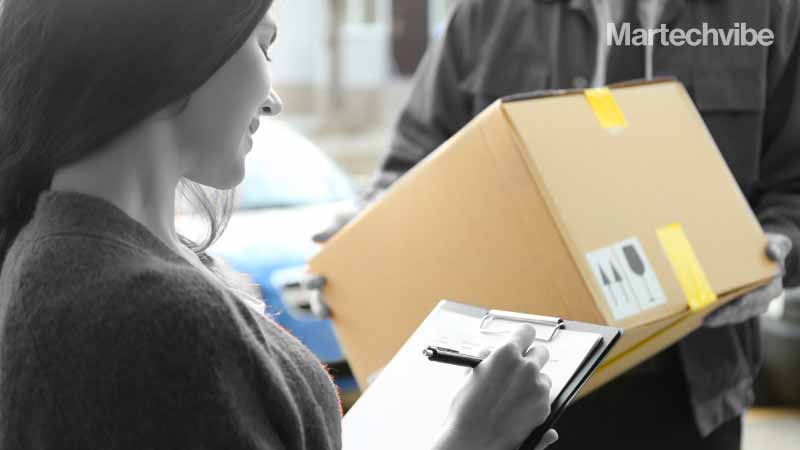99% Retailers To Offer Last Mile Delivery By 2025: Report
Bringg, the data-led delivery and fulfillment cloud platform provider, released its 2022 Bringg Barometer: State of Retail Delivery & Fulfillment. The survey highlights new findings from a survey of 500 enterprise retailers worldwide. Insights include, the current strengths and weaknesses of retailers’ last mile delivery capacity, fulfillment costs, and the ability to meet their customers’ […]
Topics

Bringg, the data-led delivery and fulfillment cloud platform provider, released its 2022 Bringg Barometer: State of Retail Delivery & Fulfillment.
The survey highlights new findings from a survey of 500 enterprise retailers worldwide. Insights include, the current strengths and weaknesses of retailers’ last mile delivery capacity, fulfillment costs, and the ability to meet their customers’ fulfillment needs with their current delivery ecosystem.
Over the course of 2021, consumers continued to prioritise last mile fulfillment speed and convenience, accelerating the need for retailers and ecommerce brands to find long-term solutions that enable them to deliver faster, more efficiently and cost effectively. In order to do so in 2022, retailers understand they need to prioritise a connected fulfillment network, automation capabilities and hyperlocal delivery.
An incredible 99 per cent of respondents say they will be doing same-day delivery within the next three years. However, many of the current last mile fulfillment models do not support same day or on demand delivery, with 36 per cent saying they don’t have the technology, citing real-time order visibility as the main problem, and 24 per cent calling out the sheer distance they need to travel from warehouse to fulfillment as a primary obstacle to delivering on time.
“The retail industry is reinventing itself and adjusting its fulfillment operations to the current market eruptions which are paving the way for cost-effective fast fulfillment,” said Guy Bloch, CEO of Bringg. “From what we’ve seen in our latest barometer report, the retail industry is highly agile, with a third of retailers (33 per cent) highly confident that they can pivot to respond to new, pandemic-driven customer behavior. With a need for more delivery capacity, greater tech innovation and stronger partnerships with providers, now is the time for the 49 per cent of ‘somewhat’ confident retailers to prove that they, too, can be agile enough to improve delivery speed and convenience. To get there, retailers will need to connect and automate their delivery network resources, processes and technologies, and adopt hyperlocal fulfillment as a goal for 2022”.
Also Read: Reward and Be Rewarded
Additional survey findings include:
- Retailers have an urgent need for greater connectivity, but a lack of visibility and outdated technology is holding them back. 44 per cent are managing multiple fulfillment channels with disparate technologies, and 61 per cent cite problems with visibility into the last mile.
- The biggest pain points when it comes to scaling delivery is a lack of real-time visibility once the order is out for delivery according to 61 per cent of respondents, 55 per cent called out the inefficient manual nature of the way they currently plan and dispatch their orders and only 35 per cent have fully automated last-mile delivery and fulfillment operations.
- When it comes to pain points associated with fast and on time delivery, a lack of data is a central concern for retailers due to real time order visibility (in this case, 51 per cent) and travel time (49 per cent). This problem is exacerbated by multiple delivery partners, as 26 per cent of retailers say they are struggling with visibility when working with third parties.
- Retailers are moving away from a reliance on a single traditional carrier and are pivoting to a mix of providers to connect with their customers faster, with 55 per cent using multiple fleets for last mile delivery.
- Sustainability and carbon emissions are an important consideration, with 56 per cent of retailers using fleets with EV vehicles, and one in three using bike fleets.
In 2021 we saw the results of Covid on the increase in eCommerce across all retail verticals, and this year it has become clear that the consumer behaviours adopted then are here to stay. This report indicates that retailers are responding and understand the need to scale out services for the long term while maintaining speed, brand identity, and cost-efficiency.
With Bringg’s release of the new Delivery Hub, retailers can swiftly increase delivery capacity, gain more visibility into third-party delivery operations, and maintain full control of the end consumer’s delivery experience. By building and managing personalised delivery provider networks, retailers maintain full ownership of the data, relationships and branded delivery experiences for sustainable last-mile growth.








































































































